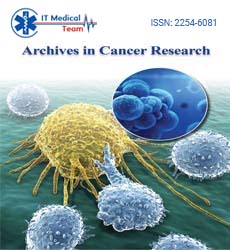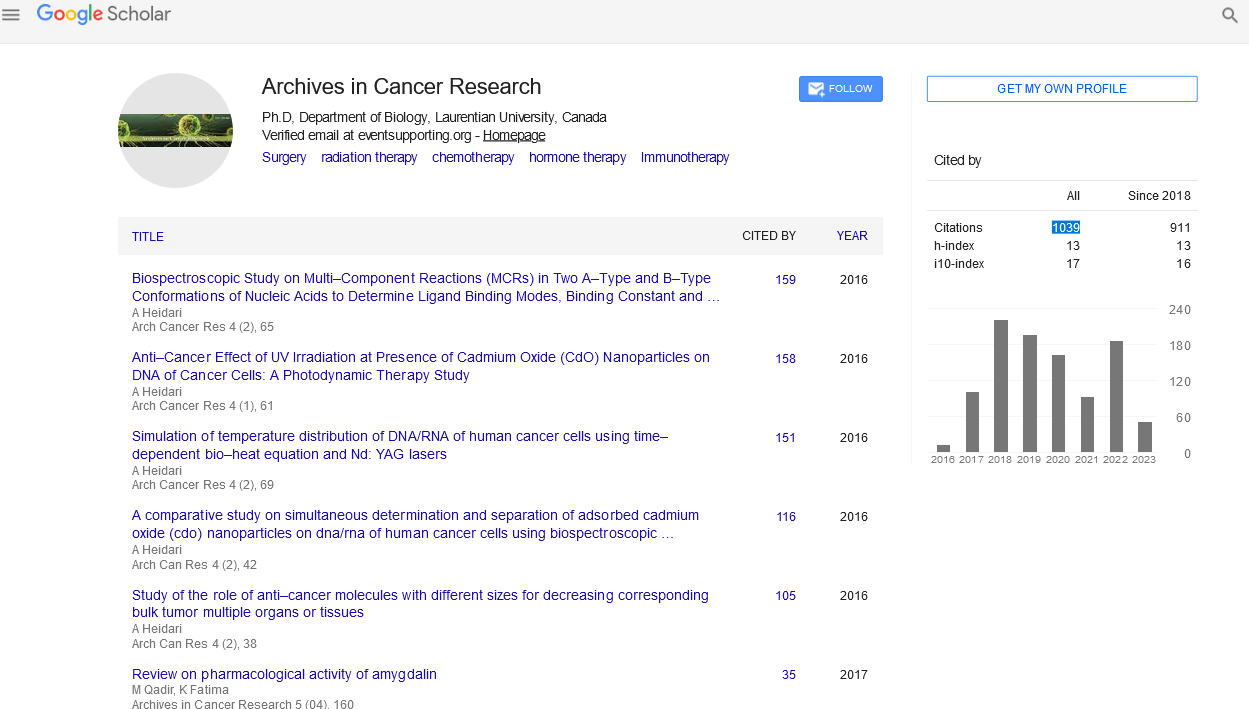Perspective - (2025) Volume 13, Issue 1
Inter-Metallic Compounds in Cancer Treatment: A Novel Approach
Suzanne L Topalian*
Department of Oncology, University of Paris, Paris, France
*Correspondence:
Suzanne L Topalian, Department of Oncology, University of Paris, Paris,
France,
Email:
Received: 30-Oct-2023, Manuscript No. IPACR-23-14207;
Editor assigned: 02-Nov-2023, Pre QC No. IPACR-23-14207 (PQ);
Reviewed: 16-Nov-2023, QC No. IPACR-23-14207;
Revised: 19-Feb-2025, Manuscript No. IPACR-23-14207 (R);
Published:
26-Feb-2025
Introduction
Cancer remains one of the most challenging health issues worldwide, with numerous treatment modalities and strategies constantly under exploration. Among the innovative approaches gaining momentum is the use of inter-metallic compounds, a field that holds great promise in the battle against cancer. These compounds, composed of different metallic elements, have exhibited remarkable anticancer properties, making them a compelling subject of research. This article delves into the potential of inter-metallic compounds in cancer treatment, shedding light on the mechanisms of action, current research, and future prospects.
Description
Inter-metallic compounds: An overview
Inter-metallic compounds are chemical compounds formed by combining two or more metallic elements in definite stoichiometric ratios. These compounds exhibit distinct properties that often differ from those of their constituent elements. They are highly desirable for various applications, including catalysis, electronics, and, as we will explore, cancer treatment. Inter metallic compounds offer a unique platform for targeting cancer cells and inhibiting their growth.
Mechanisms of action in cancer treatment
Inter-metallic compounds possess several mechanisms of action that make them potent candidates for cancer treatment:
Selective toxicity: Inter-metallic compounds can selectively target cancer cells while sparing healthy cells. This selectivity is attributed to the unique biochemical environment within tumors, such as low oxygen levels (hypoxia) and altered pH. Inter-metallic compounds can be engineered to exploit these conditions for targeted therapy.
DNA damage: Some inter-metallic compounds have demonstrated the ability to induce DNA damage in cancer cells, leading to cell cycle arrest and apoptosis. This mechanism disrupts cancer cell growth and can potentially eradicate malignant cells.
Inhibition of angiogenesis: Angiogenesis is the process by which tumors create new blood vessels to sustain their growth.
Inter-metallic compounds can inhibit angiogenesis, cutting off the tumor's blood supply and limiting its expansion.
Immunomodulation: Inter-metallic compounds can modulate the immune system's response to cancer, enhancing the body's natural defenses against malignant cells. This approach shows promise in combination with immunotherapy.
Promising inter-metallic compounds
Several inter-metallic compounds have shown remarkable potential in cancer treatment, some of which include:
Gold-silver alloys: Gold-silver alloys have been studied for their potential in photothermal therapy. These nanoparticles, when exposed to near-infrared light, generate heat, leading to localized hyperthermia within cancer cells, ultimately causing their destruction.
Iron-palladium alloys: Iron-palladium alloys have demonstrated great potential in generating Reactive Oxygen Species (ROS) in cancer cells. Elevated levels of ROS induce oxidative stress, leading to cell damage and apoptosis.
Bismuth-based compounds: Bismuth-based compounds have shown promise in their ability to target hypoxic regions in tumors. By releasing toxic agents in low-oxygen environments, these compounds can selectively destroy cancer cells.
Current research and clinical trials
The use of inter-metallic compounds in cancer treatment is an active area of research. Many studies and clinical trials are ongoing to further explore their efficacy and safety. Some notable examples of current research include:
Gold-silver nanoparticles: Clinical trials are underway to assess the safety and efficacy of gold-silver nanoparticles in treating various types of cancer, including breast and prostate cancer. These trials focus on photothermal therapy and its potential to complement existing treatment modalities.
Iron-palladium nanoparticles: Researchers are investigating iron-palladium nanoparticles' potential in targeting solid tumors. Preclinical studies have shown promising results, warranting further exploration.
Bismuth-based compounds: Bismuth-based compounds are being studied to assess their effectiveness in overcoming hypoxia in tumors. The goal is to develop therapies that can target even the most oxygen-deprived regions of solid tumors.
Challenges and future prospects
While inter-metallic compounds show great potential, several challenges need to be addressed:
Safety and toxicity: Ensuring the safety of inter-metallic compounds in humans is a primary concern. The potential for toxicity, especially with chronic exposure, must be thoroughly investigated.
Engineering complexities: The synthesis and engineering of inter-metallic compounds with precise properties can be challenging. Researchers need to develop methods for consistent production and customization.
Clinical validation: Further clinical trials are required to validate the efficacy of inter-metallic compounds across a range of cancer types and stages.
Cost and accessibility: The cost of developing and using inter metallic compounds in cancer treatment must be reasonable to ensure widespread accessibility.
Despite these challenges, the future of inter-metallic compounds in cancer treatment appears promising. As researchers gain a better understanding of their mechanisms and optimize their properties, these compounds have the potential to become essential tools in the fight against cancer.
Conclusion
Inter-metallic compounds have emerged as a fascinating avenue for cancer treatment. With their diverse mechanisms of action and selectivity, they offer a unique approach to targeting and eradicating cancer cells. Ongoing research and clinical trials will continue to shed light on the potential and limitations of these compounds. If successful, inter-metallic compounds may represent a groundbreaking development in the quest to improve cancer treatment and patient outcomes.
Citation: Topalian SL (2025) Inter-Metallic Compounds in Cancer Treatment: A Novel Approach. Archives Can Res Vol:13 No:1





